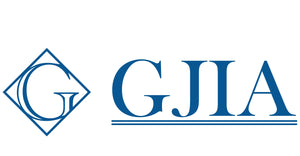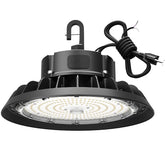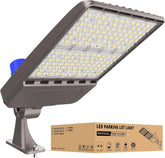What are the OSHA requirements for lighting?
A Guide to Compliance in U.S. Workplaces
Proper lighting is a cornerstone of workplace safety, impacting everything from productivity to accident prevention. In the U.S., the Occupational Safety and Health Administration (OSHA) sets legally enforceable standards for lighting across industries. This article breaks down OSHA’s key lighting requirements, explains their practical applications, and offers actionable tips for compliance.
1. OSHA’s General Lighting Standards
OSHA’s lighting rules are designed to ensure workers can perform tasks safely, navigate spaces without hazards, and identify risks like spills or equipment malfunctions. While specific standards vary by industry, 29 CFR 1910 (General Industry) and 29 CFR 1926 (Construction) outline baseline requirements:
a. Minimum Illuminance Levels
- General Areas: OSHA mandates at least 10 lux (1 foot-candle) of light in warehouses, corridors, and other spaces where employees move or perform basic tasks.
- Active Work Zones: Areas where employees handle materials, operate machinery, or read labels (e.g., assembly lines, loading docks) require at least 50 lux (5 foot-candles).
- High-Precision Tasks: Detailed work like electrical repairs, laboratory testing, or quality control may need 100–200 lux (10–20 foot-candles) or higher, depending on complexity.
b. Emergency Lighting
Per OSHA’s 29 CFR 1910.36(e), workplaces must have emergency lighting to safely evacuate employees during power outages. Exit routes, stairways, and fire extinguisher stations must remain illuminated to at least 10 lux (1 foot-candle) for 90 minutes.
c. Hazard-Specific Rules
- Construction Sites: 29 CFR 1926.56 requires 5 foot-candles for general construction areas and 10 foot-candles for workshops, offices, and first-aid stations.
- Warehouses & Industrial Facilities: Powered industrial truck (forklift) zones require 2 foot-candles for general areas and 5 foot-candles for active loading/storage areas (29 CFR 1910.178(m)(9)).

2. Key OSHA Lighting Principles
Beyond numerical thresholds, OSHA emphasizes quality and consistency of lighting to reduce risks:
a. Eliminate Glare and Shadows
Glare from poorly shielded fixtures or sunlight can blind workers, while shadows obscure hazards. OSHA requires:
- Use of diffused lenses, louvers, or indirect lighting to soften harsh light.
- Placement of fixtures to minimize obstructions (e.g., avoiding shadows from racks or machinery).
b. Ensure Uniformity
Lighting should be evenly distributed to prevent eye strain. OSHA recommends a 3:1 ratio between the brightest and darkest areas in a workspace.
c. Color Rendering and Temperature
While OSHA does not specify color metrics, it advises using lighting with:
- High Color Rendering Index (CRI ≥80): Ensures accurate color recognition (e.g., safety signs, wire colors).
- Neutral to Cool Color Temperatures (4000K–5000K): Mimics daylight for better visual clarity.
3. Industry-Specific OSHA Lighting Rules
a. Healthcare Facilities
- Patient Care Areas: Exam rooms and nursing stations require 30–50 foot-candles for accurate diagnoses.
- Surgical Suites: Operating rooms need 100–150 foot-candles with adjustable, shadow-free lighting.
b. Offices
Under 29 CFR 1910.22, general office spaces must maintain 30–50 foot-candles for tasks like reading and computer work. Anti-glare measures (e.g., monitor filters) are recommended for screen-heavy environments.
c. Outdoor Work Areas
Construction sites, parking lots, and loading yards must have at least 2 foot-candles of illumination. Portable LED towers or fixed pole lights are common solutions.
4. Compliance Tips for Employers
a. Conduct Regular Lighting Audits
Use a light meter to measure illuminance in key zones and document results. Address deficiencies like flickering bulbs or dim corners.
b. Invest in OSHA-Compliant Lighting Technology
- LED Fixtures: Energy-efficient, long-lasting, and customizable for task-specific needs.
- Motion Sensors & Dimmers: Save energy in low-traffic areas while maintaining compliance.
c. Train Employees
Educate workers to:
- Report burnt-out bulbs or flickering lights immediately.
- Avoid creating shadows with temporary equipment or storage.
5. Consequences of Non-Compliance
Failure to meet OSHA lighting standards can result in:
- Fines: Up to $16,131 per violation (as of 2024).
- Increased Accident Risks: Poor lighting contributes to slips, falls, and machinery-related injuries.
- Productivity Losses: Dim or uneven lighting strains eyes and slows task completion.
6. Case Study: Fixing Lighting Violations in a Michigan Factory
A Detroit auto parts plant faced OSHA penalties after an inspection revealed assembly line areas with only 3 foot-candles of light. By upgrading to high-bay LEDs (5000K, 80 CRI) and installing emergency battery backups, the facility reduced errors by 25% and passed a follow-up inspection.
7. Frequently Asked Questions
Q: Does OSHA require natural light in workplaces?
A: No, but OSHA encourages using daylight where possible, provided it doesn’t create glare or overheating.
Q: How often should lighting systems be inspected?
A: OSHA recommends monthly checks for burnt-out bulbs and annual professional audits.
Q: Are there exemptions for small businesses?
A: No—OSHA lighting rules apply to all employers, regardless of size.
Conclusion: Prioritize Lighting to Protect Your Workforce
OSHA’s lighting requirements are not just about compliance—they’re about safeguarding employees and optimizing operations. By understanding the standards, investing in modern lighting solutions, and fostering a culture of safety, employers can avoid penalties, reduce accidents, and create a more productive workplace.
For detailed guidance, consult OSHA’s official resources or partner with a certified industrial hygienist.








